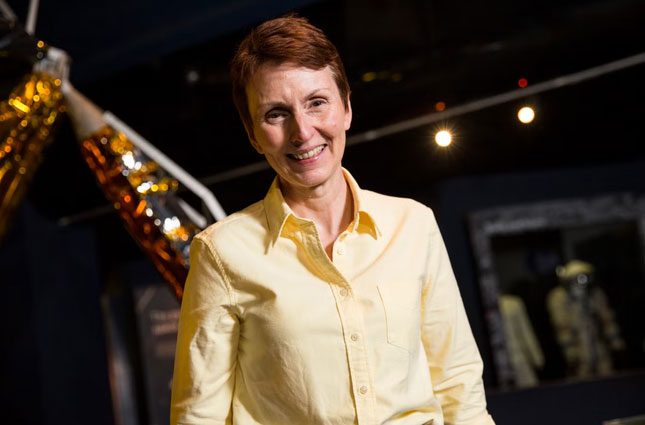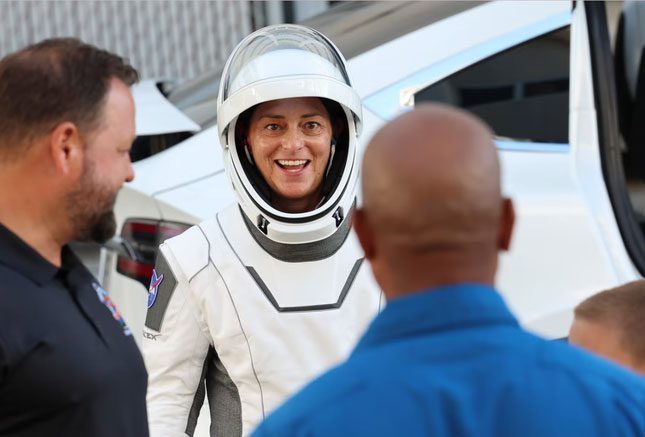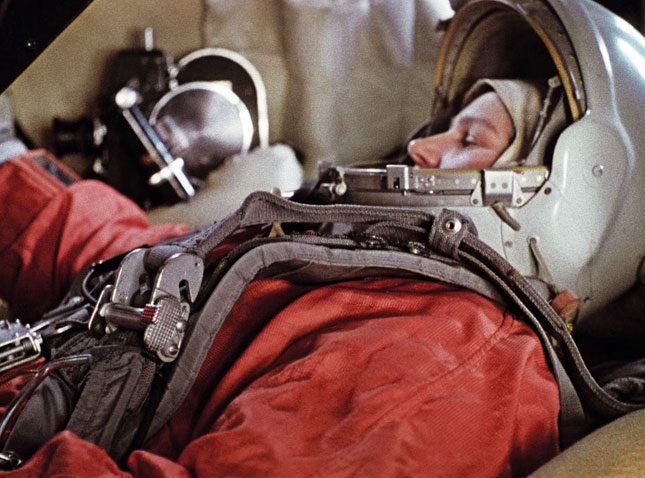In 2025, NASA plans to send the first woman to visit “Sister Hằng” to walk on the surface of the Moon. However, the first woman in space was from the Soviet Union. The larger story revolves around the role of women in relation to the topic of space exploration.
Artemis 1, the largest rocket ever built by NASA’s Space Launch System (SLS), successfully orbited the Moon in 2022 and returned to Earth. Artemis 2, a more ambitious crewed mission around the Moon, is set to launch in 2024. Meanwhile, Artemis 3, expected the following year, will take astronauts back to the Moon’s surface, over 50 years since humans last set foot there.
In the late 1960s and early 1970s, the Apollo program (USA) sent 12 people—all white men—to the Moon and back. This time, with Artemis 3, the crew will include a woman and a person of color walking on the Moon, and it could potentially be a woman of color.

Helen Sharman, the first British woman in space.
On October 5, 2022, Nicole Aunapu Mann became the first Native American woman to fly into space, beginning a five-month mission aboard the International Space Station (ISS).
Mann is a member of the Wailaki tribe from present-day northwestern California, and she stated: “I was born in 1977, and in my mind at that time, becoming an astronaut was impossible,” she remarked, reflecting on her race and gender.
Mann joined the U.S. Marine Corps while attending the Naval Academy in Annapolis, later flying fighter jets in Iraq and Afghanistan. In 2013, she was selected for NASA’s astronaut training program. She participated in the research and development of both the SLS and the Orion spacecraft (which SLS will use to send humans to the Moon). After returning from the ISS (expected in March 2023), she will be a candidate for the 2025 Moon landing.
However, Mann will face fierce competition to become the first woman to walk on the Moon. NASA announced the first 18 members of the Artemis 3 team, a group of astronauts preparing to return to the Moon. Nine of them are women, including Mann. Among this team is Christina Koch, who participated in the first all-female spacewalks; Anne McClain, who spent 204 days in space; and former international rugby player Jessica Watkins, who became the first African American woman to work on the ISS in April 2022.

All women in the Artemis 3 team hold advanced degrees in science.
“We still do not know the identity of the first woman who will walk on the Moon,” said Emily Margolis, the curator of American women’s history at the National Air and Space Museum in Washington and the Smithsonian Astrophysical Observatory in Massachusetts.
“But we know she must have incredible skills and achievements. All women in the Artemis 3 team have advanced degrees in science. They are astronauts, commercial crew commanders, or military pilots.”
Margolis added: “NASA accepted women into the astronaut corps in 1978, 20 years after the agency was established. Although NASA did not prohibit women from applying before that, the requirements effectively excluded their participation.
At that time, only military pilots were eligible, but the military was prohibiting women from doing this work. However, the requirements have changed over time.” The first American woman, but the third woman in the world to fly into space was Sally Ride, who flew aboard the Challenger space shuttle on June 18, 1983.
Two decades before Ride was launched from Kennedy Space Center in Florida, Valentina Tereshkova, a lieutenant in the Soviet Air Force, was put into orbit aboard Vostok 6, becoming the first woman to fly into space. Tereshkova’s journey occurred on June 16, 1963, just two years after Yuri Gagarin accomplished that feat.
Looking back at history, it is a fact that the Soviet Union had no plans at the time to send women into space. However, in 1961, Nikolai Kamanin, the director of Soviet cosmonaut training, heard that the U.S. was considering this. He deemed it a “national disgrace for Soviet women” and decided to take action. Whether Kamanin’s information was incorrect or not, the U.S. had no plans to send women into space at that time.
In January 1962, 400 candidates were selected, all of whom were paratroopers. A month later, that number was narrowed down to 5 to select one person to fly into space.

Valentina Tereshkova, the first woman in the world to go into space (Soviet Union, 1963).
“It was a race with the U.S. for first place: the first spacecraft to orbit the Earth, the first to fly into space, the first woman in space, the first spacewalk,…” said Helen Sharman, the first British woman in space (who visited the Soviet space station Mir in 1991), “Traditional values still prioritize women in the roles of mothers and homemakers.”
History also records: “Kamanin, the director of Soviet cosmonaut training, arrogantly referred to female cosmonauts as ‘Gagarin in a skirt.’ Kamanin is also said to be the source of the rumor that, due to illness during the flight, Tereshkova was unable to complete any of her missions; and that ‘incident’ was used as an excuse to not send more female cosmonauts (from the Soviet Union) into space. Tereshkova has always denied this story, and historians now agree that it is not true.”
Tereshkova’s achievements continue to shine. She had to study, train, and fly simulations at a level equivalent to any male cosmonaut—many of whom were not qualified. It is worth noting that at this time, safety was not the top priority. She was awarded the Lenin Order and became a Hero of the Soviet Union.
“When I was trained in Star City in the Soviet Union north of Moscow, I always admired the first astronauts, especially Valentina,” Sharman (the British astronaut) said.
“I met her when she came to the breakfast send-off for my crew before we departed in Kazakhstan. She always wanted to show support for female astronauts. We still meet at various events around the world, and Valentina always gathers all the female astronauts present for group photos.”
And now the United States has the opportunity to find a successor to Valentina Tereshkova. The first woman to set foot on the Moon will be celebrated just as warmly as the first woman in space.





















































